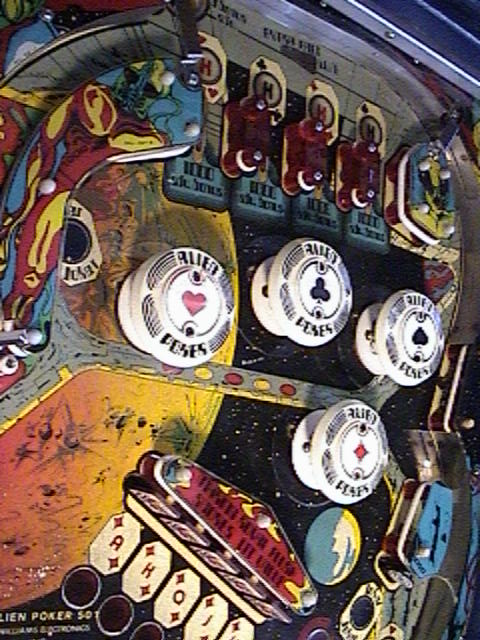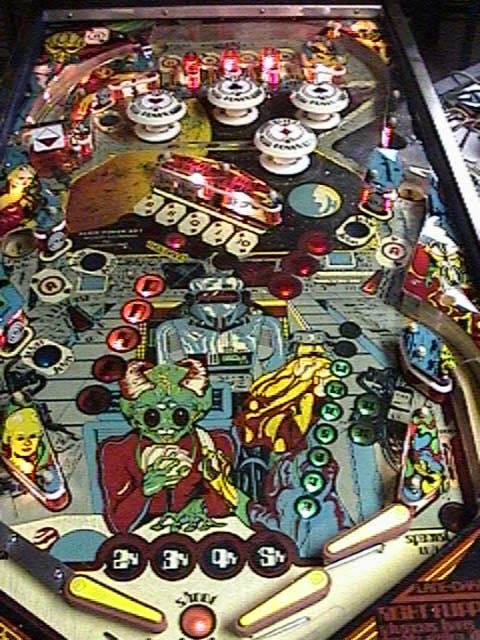Machine Statistics
Production Date: October 1980
Production Run: 6000 units
Design: Edwared Tomaszewski
Artwork: Tony Ramunni
The Game Synopsis/History
During 1979-80 Williams produced four blockbuster, breakthrough machines, Flash (1979), Gorgar (1979), Firepower (1980), and Black Knight (1980). These games, however, ended the heyday of pinball, as video games began to dominate the arcade market. Alien Poker was produced sandwiched between a couple of these blockbusters, and had a decent production run. In fact, except for those games, most machines had Production runs of under 2,000 units at this time. So, Alien Poker, while not the grand success that the “Big Four” were, still held its own. Probably its greatest flaw was that it did not have a multi-ball feature. If it had, it may have been one of the best designed games. Its speech was decent for its day. The unique twist added to the five-bank drop target was a good feature and the layout had a good flow.
SECTION 1: Electronics
Problem #1: When I first turned on the game, only two displays worked and only every other digit worked on those displays. This was a simpler problem to fix than I first suspected. The problem was basically with the connectors. I cleaned them and made sure that the connections were good and then the displays worked.
Problem #2: The status display (ball in play, number of games) did not work. This was caused by a broken/cracked display glass. The only solution was to buy a new four digit display and solder it to the display circuit board.
Problem #3: Player Number 3 display had a missing digit. I swapped the display with another one to see if the problem was on the display driver board or on the display itself. It was on the display itself. I swapped it with a known good display and the problem cleared up. I had an extra good display, so I swapped it out.
Problem #4: A Column of lights was not working. This problem ended up being more difficult to fix than I anticipated. The #3 column of lights was out and I assumed that it was due to a bad TIP42 transistor. However, it was more than this and fixing it became a real pain. There were two problems. First, my own ignorance and mistakes didn’t help (more on this in a minute). Second, an error in the Marvin fix-it guides added to my confusion. And finally, an error by the local electronics store on cross-referencing a part added to my confusion. Here’s the story.
The transistor did not test correctly according to the Clay’s guide for Williams System 3-7 machines and so it was logical to assume that it was bad. I didn’t have any TIP42 transistors so I decided to go to a local electronics store and buy one. The clerk cross-referenced the part and I came home. Before installing it, I read the specs on it, and noticed that they were different from the description in the schematics. The TIP42s are NpN type transistors and the one I bought was a pNp type. So, I call the store and he checks again. Yep, he had given me the wrong part. I go back to the store and exchange it for the correct part. I then install this transistor. However, it does not test correctly according to Clay’s guide and it doesn’t work when the board is installed in the game. So, I’m confused. Maybe this isn’t the right part. I go ahead and order real TIP42s from Ed at Great Plains Electronics. (BTW, he has the best prices on electronic components and was a huge help in finally fixing this board.) When the order comes from GPE, I find that none of the transistors test correctly according to Clay’s guide. So, I e-mail Ed and ask him if there are different versions of the TIP42. He says that there are, but the differences are only in the voltage rating. I then explain my dilemma and he lets me in on the first problem.


